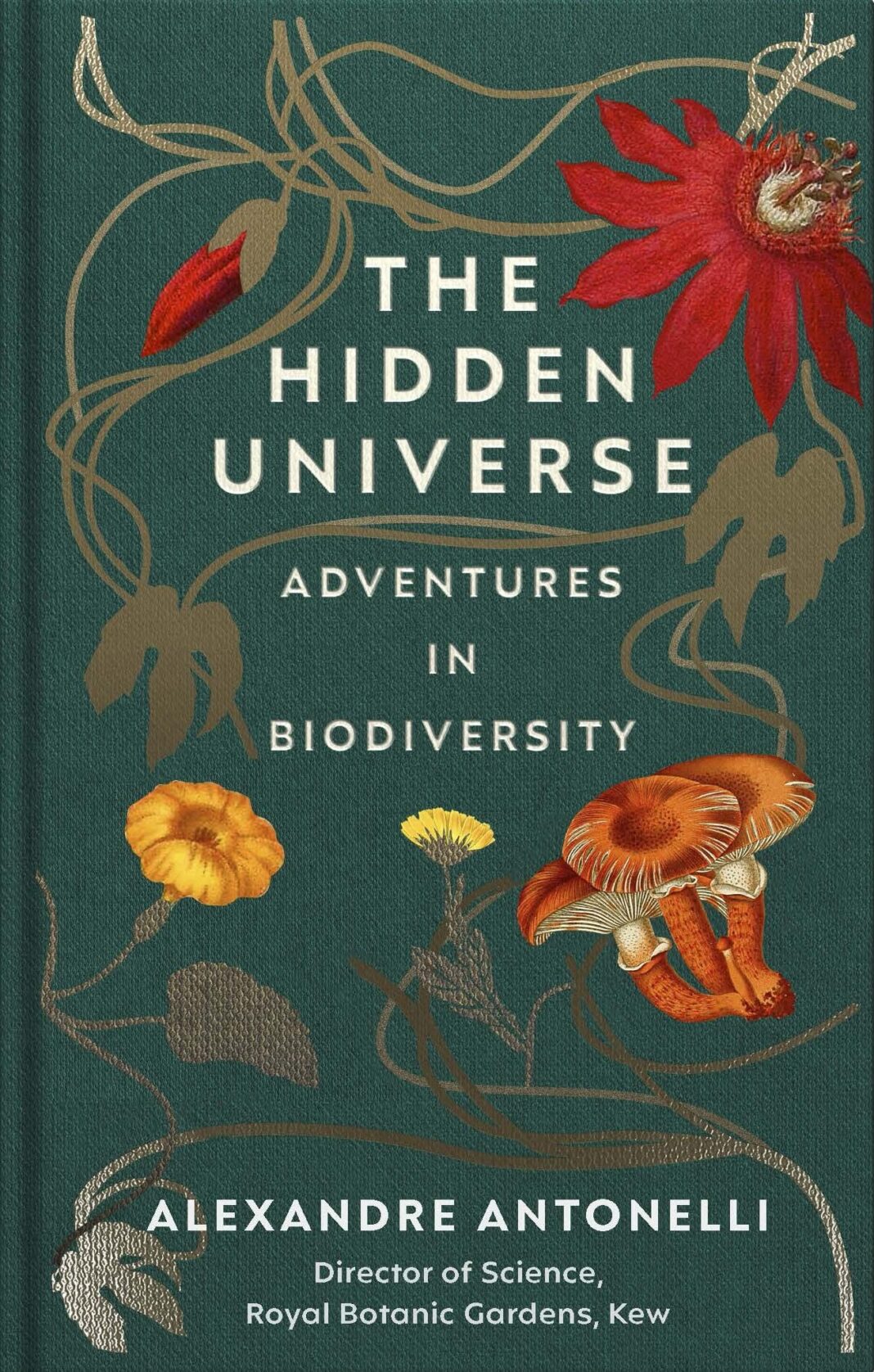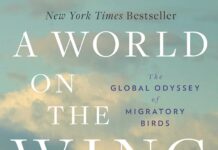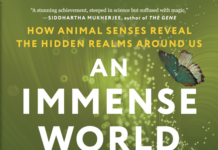As a consequence, species are now probably disappearing faster than any time in human history. On every island, every continent, every coral reef, a significant proportion of the world’s species are becoming increasingly rare, until they will one day disappear, never to return. Several hundreds of species of mammals, birds, plants and frogs that were still alive in the 1500s have been confirmed extinct, while the true number is certainly many times more. Today, scientists estimate that about a fifth of all species may face extinction in the coming decades. If this happens, it could be classed as a new wave of ‘mass extinction’ – a period when species extinctions are exceedingly larger than the normal background rate. This planet has only had five generally agreed mass extinction events in its long history – the last one 66 million years ago and caused by the impact of a 12-kilometre-wide asteroid that hit Earth off the coast of Yucatán in Mexico. Today, humans are becoming the equivalent of that asteroid.
==========
Thanks to the creation of the global network of weather stations that he championed, today we know that anywhere in the world with an average temperature of more than 18°C (64°F) and with more than 2,500 millimetres (98 inches) of annual rainfall should naturally become a rainforest (well, unless we’ve cut it down). In
==========
It’s fascinating to note how well Humboldt’s early observations on the connection between climate and type of ecosystem still apply. Thanks to the creation of the global network of weather stations that he championed, today we know that anywhere in the world with an average temperature of more than 18°C (64°F) and with more than 2,500 millimetres (98 inches) of annual rainfall should naturally become a rainforest (well, unless we’ve cut it down).
==========
Although more research is needed to prove this case, logic and available evidence suggest that an evolutionarily diverse diet is good for us. It’s very worrying, therefore, to consider the fact that this is often not the case. Worldwide, over four billion people rely on three staple foods: rice, maize or wheat. As you’ll note, these are all grasses (Poaceae) – meaning that our diet is essentially very similar to that of a free-range cow. Over 90 per cent of the human calorie intake comes from just 15 crop plants. These numbers stand in stark contrast to the 7,000-plus plant species that scientists have documented as edible, based on traditional knowledge worldwide. And this number still only represents a fraction of the total edible species that exist across the world.
==========
Even the Swedes’ most hated ticks play key ecological roles: they are food to many animals, such as birds, frogs, toads, lizards and spiders; they carry viruses, bacteria and microorganisms between many animals, probably helping to regulate their population sizes; and they host several parasitic species, including the tick wasp, which depends on them to lay their eggs and survive.
==========
In 1995, biologists released eight wolves into America’s Yellowstone National Park. It had been seven decades since the species was locally exterminated due to hunting by local farmers with the support of the public authorities, since they would occasionally prey on cattle. Already in the 1930s, scientists were concerned by the impact of the growing populations of a species of deer called the Rocky Mountain elk. The deer, which had been previously hunted by the wolves, were now intensively grazing in the park, increasing erosion and putting many plants at risk of disappearing. Carrying out such a ‘rewilding’ experiment wasn’t without controversy, as many people were nervous that the wolves would leave the park’s boundaries and attack the livestock of farmers, or pose a threat to people. In the years that followed, the park rangers and biologists involved in the project couldn’t believe their eyes. The eight wolves that were released into the park set in motion a cascading chain of effects of far greater impact than anyone could have imagined, and which is still unfolding. As predicted, the wolves did bring down the deer population. With fewer deer, the park’s valleys soon started recovering from overgrazing and the vegetation increased. Many plant species increased in numbers, including aspen, cottonwood, alder and several species of willow and berry-producing shrubs. In particular, willows were a main source of food for deer during winter, but also for beavers. With more willows, the single beaver colony that had survived in the park until the wolves were reintroduced now had plenty of food to thrive and multiply. As they did so, they started affecting the whole park’s hydrology, by spreading and building new dams and ponds. Those water bodies in turn provided suitable habitats for many fish and other freshwater species. Above ground, the bird life thrived in this newly mosaicked landscape and the number of songbirds increased. In other words, the introduction of a single species changed the dynamics and biodiversity of an entire ecosystem, even changing the course of its rivers (Fig. 13). And, in contrast, the feared impacts on livestock and people have been minimal and manageable.
==========
When I first came to live in Europe in the late 1990s, I remember what invariably happened when we drove a car in the countryside, especially on dirt roads: insects would crash against the windshield, in such profusion that we often needed to turn on the wipers. I’m sure many others will remember this, but in just a matter of years this phenomenon was almost gone, and my first child, born in 2004, has never experienced this. In 2017, researchers documented a reduction of over three-quarters of insect biomass (their total weight measured from traps) over the course of just 27 years, and a reduction of over a third of species in just 10 years.
==========
Worryingly, the work done so far has shown that some 40 per cent (!) of all timber traded internationally is probably illegal. This is a key reason why roughly a third of the world’s estimated 73,000 tree species are now threatened with extinction. Besides the obvious loss of species diversity, direct exploitation also leads to important losses in both genetic and functional diversity.
==========
Worryingly, the work done so far has shown that some 40 per cent (!) of all timber traded internationally is probably illegal. This is a key reason why roughly a third of the world’s estimated 73,000 tree species are now threatened with extinction.
==========
So, many of the forest fragments left today, which represent remnants of much larger ecosystems, probably contain a high but unknown degree of extinction debt, which means there are more species in the area than it can sustain in the long term.
==========
But when it comes to biodiversity, the reality is that it is only the third biggest threat, after habitat loss and the direct exploitation of species.
==========
Most species have a narrow climatic tolerance and thrive best within a small temperature range. We’re no exception: in offices, research shows that the ideal ambient temperature is almost exactly 22°C (72°F). Increase it by a few degrees, and our ability to make complex decisions drops; decrease it by a few degrees, and productivity decreases. Although these calculations are based on a stereotypic 70 kg (150 lb) male (women usually prefer a few degrees higher), they apply regardless of where people come from.
==========
Although we have occupied regions ranging mostly between 8–28°C (46–82°F) in mean annual temperature, there has been a preference for sites around 13°C (55°F), characteristic of today’s Beijing, Milan, Wellington or New York City. Although it’s difficult to establish causal links – since other factors are likely to be involved, such as the potential for agriculture and avoidance of tropical diseases – it’s nevertheless remarkable how
==========
Although we have occupied regions ranging mostly between 8–28°C (46–82°F) in mean annual temperature, there has been a preference for sites around 13°C (55°F), characteristic of today’s Beijing, Milan, Wellington or New York City. Although it’s difficult to establish causal links – since other factors are likely to be involved, such as the potential for agriculture and avoidance of tropical diseases – it’s nevertheless remarkable how closely associated we are with climate.
==========
At the same time, synthetic hormones from birth-control pills are flushed down the toilet and end up in lakes and seas, disrupting the reproduction of fish species, feminising males and affecting egg development in females. It is perhaps not surprising that pollution, in combination with direct exploitation and habitat loss, has led to a global crisis among freshwater fishes – one in three species is now facing extinction, and the population sizes of large species studied in detail have shrunk by an average of 94 per cent over the last 50 years alone.
==========
Today, nearly a quarter of the world’s land surface is affected by artificial light at night, either directly or indirectly through skyglow. Artificial lights disorient migrating birds and sea turtles and disturb the behaviour of crickets, moths and bats. In Germany, it has been estimated that artificial lights may kill more than 60 billion insects over a single summer, which fly straight into lamps and die, or collapse after circling them for hours.
==========
Light pollution, habitat loss, pesticides, competition with invasive species, and climate change are all thought to have contributed to the massive decline in abundance and diversity of insects worldwide over recent decades, with substantial knock-on declines in the pollination of wild and cultivated plants.
==========
But wildlife has been unprepared for the massive changes in the world’s ‘soundscape’ that have occurred over the last few decades. Today, the noise of ships and boats, low-flying aeroplanes, construction work, seismic surveys, military activity, pile-driving and underwater mining for oil and gas – some of which is able to travel thousands of kilometres – is causing massive behavioural impacts, disrupting the ability of animals to move, forage, socialise, communicate, rest and respond to predators, increasing their mortality and reducing their reproductive success. EMERGING DISEASES
==========
But wildlife has been unprepared for the massive changes in the world’s ‘soundscape’ that have occurred over the last few decades. Today, the noise of ships and boats, low-flying aeroplanes, construction work, seismic surveys, military activity, pile-driving and underwater mining for oil and gas – some of which is able to travel thousands of kilometres – is causing massive behavioural impacts, disrupting the ability of animals to move, forage, socialise, communicate, rest and respond to predators, increasing their mortality and reducing their reproductive success.
==========
In summary, these are the main threats to biodiversity: human encroachment on and destruction of natural habitats; unsustainable consumption and international trade in illegally captured animals and plants; a warmer climate with extreme and unpredictable weather events; increased encounters between previously disconnected and often already decimated species; multiple forms of pollution; and new diseases. This is the result: all these events are now interacting to substantially increase the risk of extinction for a large number of species, including our own.
==========
Bending the curve of biodiversity loss. This diagram, produced by the Secretariat of the Convention on Biological Diversity, lists the most impactful actions to protect and restore nature, which I discuss in more concrete terms in the following chapters and throughout this book. They belong to five broad categories: 1) conserving what is left and restoring what we’ve degraded; 2) combating climate change, through reduced emissions and increased carbon sequestration from the atmosphere; 3) reducing other drivers, by taking action against pollution, invasive species and overexploitation; 4) creating more sustainable forms of production of goods and services, particularly food; and 5) reducing consumption and waste by all of us.
==========
Our publication setting out ‘Ten golden rules for reforestation’ received huge interest from the media, reaching tens of millions of people worldwide. Thousands
==========
Our publication setting out ‘Ten golden rules for reforestation’ received huge interest from the media, reaching tens of millions of people worldwide.
==========
After all, the fight against smoking in restaurants and other enclosed places was not won by appealing to smokers, but through smoking bans. Several international environmental bans have been successful before. In the late 1980s, the production and use of chlorofluorocarbons (CFCs) in refrigerants and propellants were phased out slowly, as the chemicals were shown to deplete the ozone layer in the stratosphere, causing a ‘hole’ over Antarctica 29 million square kilometres (11 million square miles) wide.
==========
The ban on whale hunting was introduced as a response to the steep decline of the populations of many whale species, including the largest animal that ever existed – the blue whale. In North America and Europe, the banning of DDT and PCBs (whose effects were discussed in the previous chapter) in the 1970s and 1980s helped save several species of eagles and seals from the brink of extinction. The more recent ban on most products containing mercury in the 2000s is also having positive effects on wildlife.
==========
In 1972 in the USA, economist William Nordhaus wrote a seminal paper discussing this very issue and referring to a quote by ecologist Paul Ehrlich that ‘We must acquire a life style which has as its goal maximum freedom and happiness for the individual, not a maximum Gross National Product’. In the decades that followed, Nordhaus went on to develop a series of influential economic models that would consider the true environmental impact of growth, which eventually won him a Nobel Prize in Economics in 2018.
==========
But the truth is that the only way to stop and reverse the loss of the world’s incredible biodiversity is for each of us to change our lifestyle radically and substantially, and to do that now.
==========
Yet, changing what we eat is precisely what we need to do, especially in parts of the world with high per capita consumption of meat.
==========
Eat less meat, or none at all.
==========
Eat more fruit and vegetables.
==========
Give preference to locally available species and varieties, and choose by season.
==========
Give preference to locally available species and varieties, and choose by season. I know avocados are delicious, but if they don’t grow where you live it means long transportations of a crop that already has a large environmental impact, from intensive water usage in Chile to blocking the natural migration routes of elephants in Kenya. When shopping, look for wonky fruits and vegetables (Fig. 23), rather than perfectly cylindrical and spotless items (in the United Kingdom for instance, 40 per cent of potatoes, apples and onions are tossed in the bin, and 25 per cent of carrots are rejected because of cosmetic imperfections). Bring your own fabric bags to the supermarket and avoid products with plastic if possible.
==========
Avoid conventional cotton. The clothing industry is heavily focused on cotton, a plant that requires vast amounts of fresh water to grow, often in places where the use of water competes with the needs of people and natural ecosystems like wetlands and rivers.
==========
Organic cotton is a better alternative but requires just as much water; so look for environmentally kinder sources of plant fibres, such as hemp, flax, ramie and bamboo. To produce one kilogram of hemp (Fig. 25), for instance, 400 litres of water are used, compared to some 10,000 litres for cotton.
==========
Certain animal-based natural products such as wool can also be sustainably produced and are long lasting. After hemp, wool consumes less energy and has a smaller carbon footprint than most other textile fibres, partly because sheep can be raised on non-arable lands and rough terrains, meaning that they do not require the conversion of forests and other ecosystems into pastures as is often done for cattle (a process which releases vast amounts of carbon into the atmosphere).
==========
Likewise, leather that is a by-product of organic farming is a great use of resources. Just avoid items that have been heavily processed chemically with dyes and finishing products.
==========
Buy less stuff. There’s no other choice: to reduce the pressure on natural resources and ecosystems, we must substantially decrease all forms of consumption.
==========
Watch out for furniture. With about a third of all tree species currently under threat, furniture made from wood is a key area for improvement, given its strong links to deforestation and unsustainable selective logging. As I discussed in Chapter 10, there is much more illegal wood out in the market than we would like to think.
==========
Invest in quality. Whether buying second-hand or new, choose things that will last.
==========
Also consider repairing rather than replacing items, and choose brands that promote this.
========== If you have plenty of space, let the forest come in, either naturally (through natural regeneration from seeds) or by planting tree saplings of native trees; then you’ll also attract and enjoy the many associated species and other benefits that trees bring. Do less weeding: it’s fun to see what native plants come up by themselves, and a few corners of nettles or other native plants provide room and food for many butterflies. Cultivate species that are good sources of nectar for insects – it’s best to ask for local advice. Place a pile of branches and leaves to welcome hedgehogs and small rodents and insects (Fig. 26). Leave out a few tree logs to naturally decay, and over time they will start hosting fungi, mosses and insects that depend on that substrate, which has become increasingly rare due to the obsession with cleanliness in parks and gardens.




